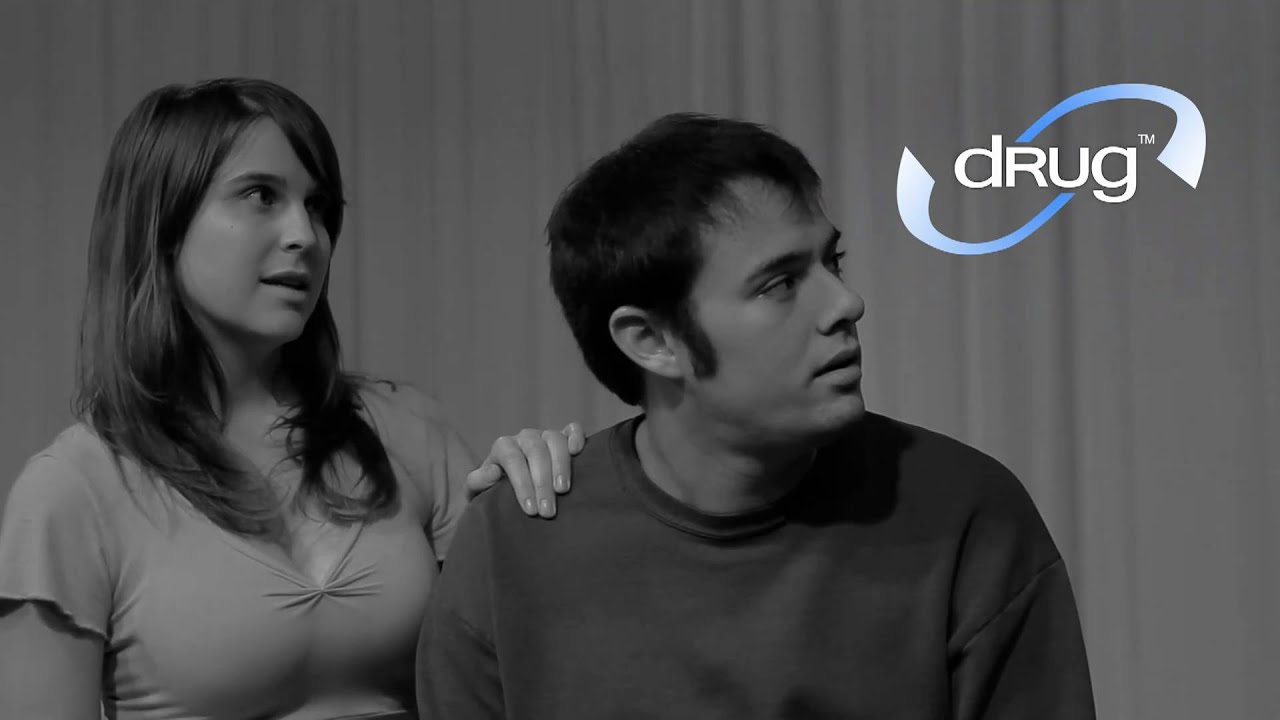OCD: Biological treatments
 The biomedical approach is based on the assumption that if a disorder like OCD is caused by a neurochemical imbalance, drugs can be used to alleviate the symptoms. For example, genetic abnormalities that affect the neurotransmitter serotonin can increase vulnerability to OCD, thus drugs that increase serotonin levels - such as SSRIs - may be effective in reducing obsessive thoughts and compulsions.
The biomedical approach is based on the assumption that if a disorder like OCD is caused by a neurochemical imbalance, drugs can be used to alleviate the symptoms. For example, genetic abnormalities that affect the neurotransmitter serotonin can increase vulnerability to OCD, thus drugs that increase serotonin levels - such as SSRIs - may be effective in reducing obsessive thoughts and compulsions.
Initially, tricyclic antidepressants were used to treat OCD by increasing levels of serotonin, noradrenaline, and dopamine. In one of the first detailed case studies of OCD, Rapoport (1989) describes the case of 12-year-old Charles, who spent hours a day engaged in ritualistic handwashing. The tricyclic clomipramine (Anafranil) gradually helped return his behaviour to normal, and he overcame his obsession with “stickiness”, which he described as a disease. Unfortunately, a year later, he developed tolerance, meaning higher and higher doses were needed in order to control his symptoms.
Despite the problems with tolerance, clomipramine is still used today as a first-line medication to alleviate obsessions. Selective serotonin reuptake inhibitors (SSRIs) are also used, e.g. fluoxetine (Prozac). These drugs block the transporter molecules, or ‘pumps’, on the presynaptic cell membrane, meaning there is more serotonin available in the synapse, ready to bind to receptors on the postsynaptic cell.
Issari et al (2016) provides evidence to support the use of SSRIs; they carried out a meta-analysis of seventeen randomized control trials, including over 3000 participants. After just two weeks, Y-BOCS scores were significantly lower for the SSRI group than a matched, placebo group. This was a surprising but positive finding, as previous research suggests that SSRIs can be slow to take effect. On the downside, effects were reduced over the longer term, but this was moderated by increasing dosages.
Thinking about research
Answer each of the following questions with regard to the study by Issari et al (2016).
Issari et al. (2016) used scores on the Y-BOCS as their dependent variable. What are the strengths and limitations of using this scale to measure the participants’ symptoms?
The Y-BOCS collects quantitative data and scores are assigned by a clinician as opposed to being self-reported. This avoids issues with self-reported data that can be hampered by the degree to which the participant has insight into the severity of their condition. That said, clinicians may also be subjective. The scores assigned are based on detailed clinical interviews with the participants and it is possible that scores could then be affected by researcher bias. For example, the age, gender, or ethnicity of the participants could affect the way their answers are perceived and the scores assigned.
The design of the studies used in this meta-analysis were randomized control trials or RCTs. What does this term mean and why is this an important design strength?
Participants are randomly assigned to two or more groups to test a specific drug, treatment, or other intervention. This is a strength as it decreases participant variables, which could otherwise limit internal validity.
Control groups in studies such as those included in Issari's meta-analysis usually take a placebo drug and the design is described as double-blind. What is meant by these terms and why are these design features a strength of such studies?
A placebo drug looks, tastes, and smells exactly like the real drug, but does not contain the same active ingredient(s). The people taking the placebo will not know this and therefore should have the same level of expectancy, in terms of a reduction in symptoms. At the end of the trial, the symptoms experienced by both groups can be compared. If the experimental group improves more than the control group then this can be said to be due to the drug itself, as opposed to the expectation of improvement.
In a double-blind study, the participants do not know whether they have taken a placebo or the real drug and the researchers tasked with assessing their symptoms before and after the trial also do not know whether the person was in the experimental or control (placebo) group. This means the results cannot be affected by researcher-bias or expectancy effects.
Although SSRIs or clomipramine have been shown to be effective, at least 30% of patients do not show any significant improvement. Selective noradrenaline reuptake inhibitors [SNRIs], including venlafaxine, have been investigated as an alternative. These drugs have fewer side effects and have had positive outcomes for people with previously treatment-resistant symptoms. Yaryura-Tobias et al (1996) found that 43% of patients taking venlafaxine showed improvements compared to 0% in the placebo group. This said, many of the SNRIs studies have small samples and the trials sometimes lasted only 8 weeks. Much larger and longer studies are necessary in order to judge which drugs are most effective, especially in preventing relapse.
Evaluating the use of SSRIs and SNRIs
In the following clip, Dr. Evelyn Stewart discusses some of the problems with SSRIs and SNRIs - including side effects and the time required to achieve the greatest benefit. Watch the video and then answer the questions below.
1. What are some of the side effects of these drugs?
Diarrhea and/or constipation, sedation/tiredness, insomnia, tremors, headaches, possible suicidal thoughts
2. How long do SSRIs and SNRIs take to show some effect?
Several weeks. SSRIs reach about 50% effectiveness within 2 weeks, SNRIs can take longer, with less than 50% effectiveness even after 2 months, meaning it's important to give the drugs a chance to work and not give up too soon.
3. How long should a person wait before deciding whether a drug is effective for them?
10 - 12 weeks
Overall, the picture regarding drug treatments is somewhat gloomy; although symptoms may be improved, patients are sometimes only 20 - 30% better off and, as stated above, many do not experience any improvement. Other drug treatments have been used with some success. For example, in a study by Selvi et al (2011), 72% of people who had received no benefit from SSRIs improved by at least 35% on the Y-BOCS when taking risperidone, an antipsychotic drug, usually used for people with schizophrenia, a disorder characterized by delusions and hallucinations. Interestingly, this drug decreases dopamine and serotonin levels.
Similarly, granisetron, a serotonin antagonist, was shown to be highly effective in a study by Askari et al. (2012). When patients took this drug in combination with an SSRI, all patients improved by at least 35%; in addition, 90% were in complete remission within just 8 weeks. It may seem paradoxical to take one drug that increases serotonin, only to take another that decreases its impact, but Askari explains that granisetron blocks 5HT-3 receptors and believe its therapeutic effect lies in its ability to indirectly reduce dopamine levels. This study demonstrates the complex interactions between neurotransmitters and highlights the importance of the treatment etiology fallacy - that is, just because a serotonin antagonist brings about improvement, this does not necessarily mean that an excess of serotonin was the cause of the disorder.
ATL: Thinking critically
 The United States, New Zealand, and Brazil all allow what is known as "Direct-to-consumer" (DTC) advertising. This marketing strategy targets patients - and potential patients - to urge their doctors to prescribe drugs such as antidepressants or anxiolytic (anti-anxiety) drugs.
The United States, New Zealand, and Brazil all allow what is known as "Direct-to-consumer" (DTC) advertising. This marketing strategy targets patients - and potential patients - to urge their doctors to prescribe drugs such as antidepressants or anxiolytic (anti-anxiety) drugs.
Based on what we know about drug treatments for mental illness, what are the pros and cons of this marketing strategy? Do you think that more countries should do this? Why or why not?
Culture and drug treatments
 Drug treatments are much more frequently used in some cultures than others. For example, in China, less than 6% of people seek pharmacological treatments for mental health symptoms. In India, access to any form of evidence-based treatment is extremely low. Furthermore, when drugs are used, there are cultural differences in the preferred drug. For example, benzodiazepines, a class of anti-anxiety drugs, are commonly prescribed in Latin America, alongside behavioural treatment, which is subsidized by the government. In Japan, antipsychotics are a popular choice, particularly for those with the most severe symptoms.
Drug treatments are much more frequently used in some cultures than others. For example, in China, less than 6% of people seek pharmacological treatments for mental health symptoms. In India, access to any form of evidence-based treatment is extremely low. Furthermore, when drugs are used, there are cultural differences in the preferred drug. For example, benzodiazepines, a class of anti-anxiety drugs, are commonly prescribed in Latin America, alongside behavioural treatment, which is subsidized by the government. In Japan, antipsychotics are a popular choice, particularly for those with the most severe symptoms.
Interestingly, people of Asian origin are especially prone to unpleasant side effects when prescribed clomipramine, and this has been explained with reference to the prevalence of a specific genetic polymorphism that leads people to become ‘slow metabolizers’ (Nicolini et al. 2017). This finding demonstrates why certain treatments may be preferred over others, for reasons that are not necessarily linked to differences in socio-cultural attitudes or poverty.
Evaluating drug treatments
The key strength of drug therapy is that for many people who suffer from OCD, it alleviates the symptoms that make day-to-day living difficult.
In spite of the strengths of drug treatments, there are also some rather serious limitations. One limitation is the problem of side-effects – the negative effect of using the drug itself. For example, SSRIs are known to have the following side effects in some patients: nausea, increased weight gain, loss of sexual desire, insomnia, blurred vision, constipation, dizziness, and anxiety.
Another limitation of drug therapy is that clinicians are still not sure how these drugs alleviate symptoms of OCD and why the treatment is not effective for all patients. Even though they boost levels of neurotransmitters in the brain within days or even hours of use, it usually takes several weeks of treatment before a therapeutic benefit results. And not all patients respond to them.
Relying too heavily on drug treatments may lead to the neglect of important psychological or social factors that may play a significant role in the disorder. It can be argued that simply using a drug to treat OCD is a reductionist approach. An interesting study, carried out by Park et al (2020) combined measures of metacognitive beliefs and drug treatments. It was conducted on a sample of 132 Korean people with OCD, none of whom had taken medication prior to the study. Age and “positive beliefs about worry” both predicted early response to medication. Those who had the highest “positive beliefs about worry” were the latest to show any response to medication. These findings suggest that CBT that addresses beliefs about the role of worry may augment the effectiveness of drug treatments, particularly for older people. It also shows that cognitive factors may play a mediating role in the effectiveness of drug treatments.
Another limitation of drug treatment is the problem of developing a dependence on the drug. Anti-depressants and anti-anxiety drugs may lead to discontinuation syndrome – often known as “withdrawal symptoms.” This is supported by Keuthen et al. (1994) who found that 39% of their sample suffered withdrawal symptoms at the end of their RCT examining the effectiveness of SSRI treatments for OCD.
Checking for understanding
The term pharmacology refers to what type of biological treatment?
Answer: All the options are biological approaches to treatment but pharmacology refers to the use of drug treatments, which are used to correct biochemical imbalances.
Which of the following neurotransmitters has not been targeted in drug therapies for OCD?
Answer: Selective Serotonin Reuptake Inhibitors and the serotonin antagonist granisetron have both been used in the treatment of OCD, as have Selective Noradrenaline Reuptake Inhibitors, and risperidone, an atypical antipsychotic medication, targeting both dopamine and serotonin. The correct answer is, therefore, acetylcholine.
What was the name of the first type of antidepressant used to treat people with OCD, including Charles, the participant in Rapoport’s early case study?
Answer: While Selective Serotonin Reuptake Inhibitors and Monoamine Oxidase Inhibitors are both types of antidepressants, they were not the type used with Charles. He took a tricyclic medication called Anafranil. The term neuroleptic refers to a class of drugs usually used to treat psychosis, of which risperidone is one.
Charles, the boy who couldn’t stop washing took the tricyclic drug clomipramine to alleviate his symptoms. What was the main problem he faced with this drug?
Answer: All four options are limitations of drug treatments, but the major issue for Charles was tolerance, meaning that long-term the drug no longer brought about the same degree of symptom relief. The drug clomipramine that Charles was taking can also bring about side effects and withdrawal. It can also be addictive if taken in high dosages, long term, and also when combined with other drugs, such as alcohol.
Selective serotonin reuptake inhibitors bind to transporter molecules found…
Answer: SSRIs work by binding with the transporter molecules in the membrane of the presynaptic cell meaning that serotonin remains in the synaptic cleft, instead of being recycled by the presynaptic cells. This increases the chance of the remaining serotonin binding to the receptors on the postsynaptic cell.
The findings of Issari et al. (2016) were surprising because…
Answer: In previous studies, it had been found that SSRIs took a considerable amount of time to take effect when used to alleviate symptoms of OCD, yet in this study, participants experienced relief within just 2 weeks.
Which of the following is an SNRI that is used to treat OCD?
Answer: Prozac is an SSRI, Anafranil is a tricyclic and Granisetron is a serotonin antagonist that works by binding to the receptors of the postsynaptic cell without activating them. Venlafaxine is therefore the correct answer.
Which of the following is not true regarding the findings of studies examining the use of SNRIs?
Answer: Findings may not be generalizable due to small sample sizes and relapse rates are unknown due to the relatively short duration of the follow-ups in many studies. It is true that SNRIs may be better tolerated due to fewer side effects leading to increased compliance. Thus, the correct answer is “They are not effective for people with treatment-resistant symptoms” which is untrue. SNRIs are helpful for people who have not received any benefit from SSRIs or clomipramine.
Which of the following is not a side effect of SSRIs and SNRIs?
Answer: Stewart listed tremors, headaches, and constipation as common side effects of SSRIs and SNRIs, but neither of these drugs is commonly associated with skin rashes.
Askari et al. (2012) suggest that the serotonin antagonist granisetron may help to treat symptoms of OCD by…
Answer: In Askari et al. (2012) granisetron was twinned with an SSRI that did have the effect of increasing serotonin by blocking reuptake, but the granisetron was thought to be effective due to its indirect effect on dopamine, which was decreased.

 IB Docs (2) Team
IB Docs (2) Team
